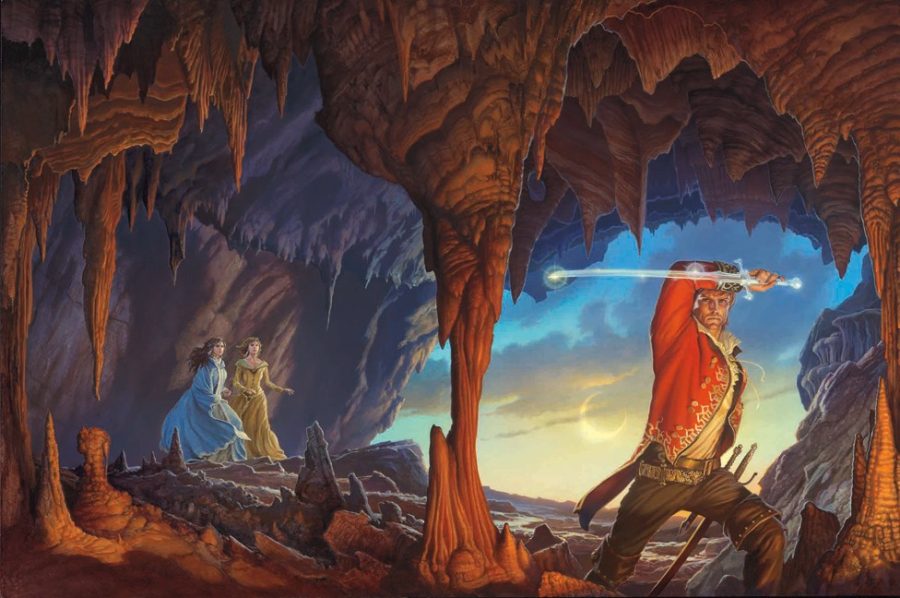Reading a fantasy series is always an undertaking, but none is quite so involved as “The Wheel of Time.” It’s a sprawling 14-book tale about your typical farm boy turned chosen one who has to stop what is basically the super-devil from destroying reality itself — except it’s also so much more, and it approaches Tolkien-levels of epic.
Robert Jordan’s first book was published in 1990, and the final installment, “A Memory of Light,” was just released this January. A series spanning 23 years is certainly a feat to be proud of, but Jordan didn’t even live to see its completion. Unfortunately, he died of amyloidosis in 2007, leaving more than 20 percent of the story unfinished.
Fortunately for fans, who were worried about being left hanging, Brandon Sanderson picked up the reins and finished the last three books. And what a job he did.
“A Memory of Light,” is the perfect representation of everything that is good and bad about “The Wheel of Time,” and is a testament to Jordan and Sanderson as authors. It’s also the final point of persuasion to the argument of whether the series is worth a read.
The answer is yes. It’s one of the most fleshed-out worlds ever created, with cultures as multifaceted and numerous as there are in real life. The stakes are as big as they get and all the time spent with the characters makes almost all of them endearing, in one way or another. The magic system is awesome (in the biblical sense) and fairly balanced all at the same time. But above all the rest, it’s a true adventure, rife with the inconvenience of reality; that’s part of what makes it so long.
Plus, a good, finished fantasy series is hard to come by. That’s what makes “The Wheel of Time” so worthwhile. Many stories will start off strong only to taper off after a few books as the author loses focus, and with 14 books it’s a wonder the story ended on such a perfect note.
That isn’t to say the series doesn’t have its problems with focus, because entire books made me question whether Jordan had “gone too deep.” Books eight through 10 were almost unbearable because pretty much nothing happened.
But here’s the thing: with the help of Sanderson, the last three books reined the story in and finished strong in as perfect of a way as anyone could imagine, considering the circumstances. Of course, most of what Sanderson did was extrapolated from partial manuscripts and notes written by Jordan himself, but the fresh perspective allowed the story to get back on the rails it had long since gone off of.
“The Gathering Storm” and “The Towers of Midnight” (books 12 and 13, the first two books Sanderson wrote) were great assurances to fans that the series was in good hands. But with “A Memory of Light,” he reminded everyone why The Wheel of Time was worth a two decade investment.
After 13 books of buildup, the Last Battle that was prophesized since the beginning had to be massive, and it was. The whole 900-plus page book was the battle, and everyone came out to play. But despite everything there was to keep track of, Jordan and Sanderson left almost no loose ends. Every character had a resolution, somehow, and no one’s future was wholly uncertain.
Fans don’t really have to wonder what’s going to happen to everyone because it’s all laid out. And some may prefer the mystery, but considering the creator is dead, certainty is a positive. “The Wheel of Time” won’t be for everyone, but it is a world worth exploring, and there are so many places to go. But best of all, it’s actually done, which means no years of waiting to find out what happens next.
And hey, George R. R. Martin can’t promise you that. So you might as well pick up “The Wheel of Time” while you wait for the next “A Song of Ice and Fire” book (a.k.a “Game of Thrones,” for the HBO only crowd).









